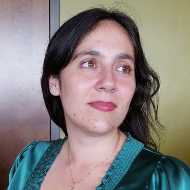Let me tell you a story.
There is a little girl named Dora who is a member of my community. She likes me because I am not particularly strict, and because I am a reliable source of snacks. I teach her preschool class in our religious school. We play with letters from the aleph-bet and talk about the holidays and read stories. Last week I found a book I thought Dora would like, so I brought it to class. When I began to read, and Dora first saw the pictures, she got out of her seat and came up to touch the face of the girl in the book.
“She brown,” Dora said, wondering and delighted.
Dora is normally a big rule-follower. Dora normally speaks with standard English syntax. For her to get out of her seat, or speak in dialect, were both very unusual.
Dora comes to synagogue with her family all the time. She lives in a fairly observant home. Even so, it was extremely evident that it meant something to her to see a Jewish girl who looked like her, to see another Jewish family that was brown with big hair. Seeing it in a book made her feel, in a new way, that she belonged.
I think Dora’s story is an important reminder as we begin the national expansion of NCSE’s Science Booster Clubs. I know the materials we’ve developed work well in Iowa, but it would not surprise me if we needed to make some alterations for other places. We work hard to create a warm and welcoming environment, because we want people to see themselves as capable of doing science. We want science to be something that they can identify with, and see as part of their community. As we branch into new geographic regions, it will be crucial to take community characteristics into account.
For example, as we get into rural Texas, we will really benefit by developing materials in Spanish, a project for which we are beginning to lay groundwork. And in every new community, we need to work actively to recruit volunteers from all of the diverse ethnical and cultural groups that live there.
Some people may think that such efforts are unnecessary because science is color-blind. Well, perhaps in theory science is accessible to everybody, but in reality, too many people don’t see any scientists who look like them, so science does not, in fact, feel very accessible. There is a lot we can do to change that perception. Even little things we do can mean a lot to people. Indeed, they can mean more than we might think.
There is a significant body of research demonstrating that kids are more engaged with science if they see people they can identify with doing science. For example, only 9% of Iowans say that they don’t believe in God, or that religion is not at all important in their lives. I’ve suspected for quite a while that one of the reasons our outreach work in Iowa has been so successful has been because of my connections to a faith community. The vast majority of people I meet through my science outreach work do not share my religion, but they know that I am a person of faith. Seeing a person who is openly religious talk about evolution in public makes evolution a more accessible topic to other religious people. It removes some of the stigma.
As Science Booster Clubs take root in regions where some cultural groups have historically been less than fully included in the scientific community, we must make a special effort to develop connections to those groups and communities. We know that Black, Latino, and Native American students have demographically disproportionately low rates of persistence in the STEM fields. Students from these minority groups often report that they experience difficulties in inclusion and subtle forms of prejudice. They report that they find it more difficult to proceed without role models.
Can Science Booster Clubs contribute to improving this sad situation? Clubs are getting started in the South and in Texas. We don’t have to have group leaders who are identical to the populations we are trying to reach. (We don’t have that in Iowa.) But having connections is important, finding ways to reach across and model inclusion is important. Learning to do this will be a dynamic process. Knowing that this is something we need to pay attention to, right as we get off the ground, is an important first step.

